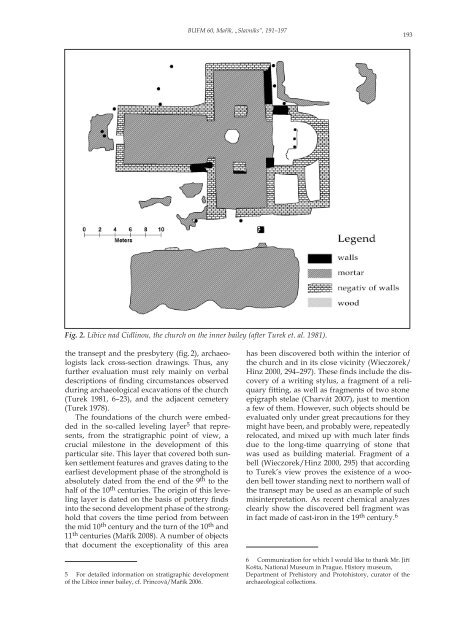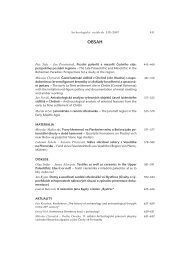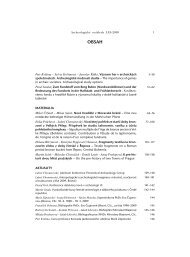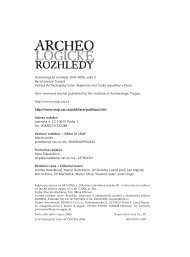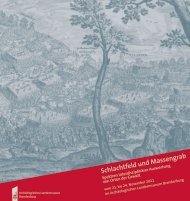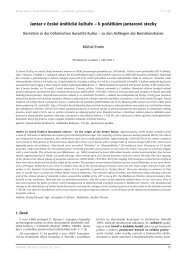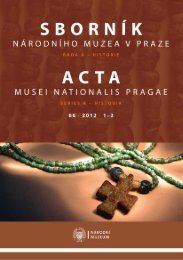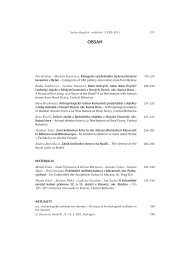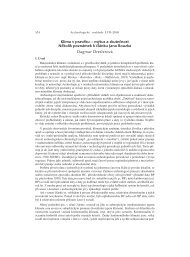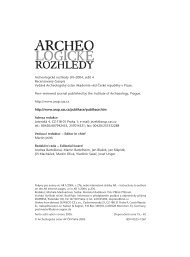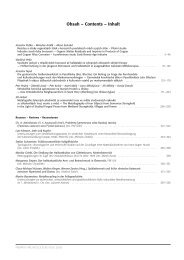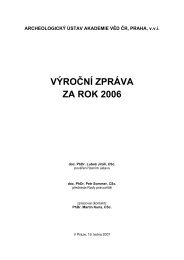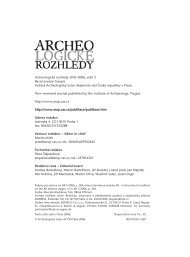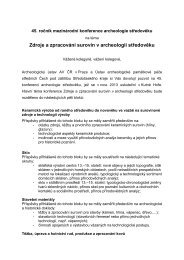Create successful ePaper yourself
Turn your PDF publications into a flip-book with our unique Google optimized e-Paper software.
BUFM 60, Mařík, „<strong>Slavniks</strong>“, 191–197193Fig. 2. Libice nad Cidlinou, the church on the inner bailey (after Turek et. al. 1981).the transept <strong>and</strong> the presbytery (fig. 2), archaeologistslack cross-section drawings. Thus, anyfurther evaluation must rely mainly on verbaldescriptions of finding circumstances observedduring archaeological excavations of the church(Turek 1981, 6–23), <strong>and</strong> the adjacent cemetery(Turek 1978).<strong>The</strong> foundations of the church were embeddedin the so-called leveling layer 5 that represents,from the stratigraphic point of view, acrucial milestone in the development of thisparticular site. This layer that covered both sunkensettlement features <strong>and</strong> graves dating to theearliest development phase of the stronghold isabsolutely dated from the end of the 9 th to thehalf of the 10 th centuries. <strong>The</strong> origin of this levelinglayer is dated on the basis of pottery findsinto the second development phase of the strongholdthat covers the time period from betweenthe mid 10 th century <strong>and</strong> the turn of the 10 th <strong>and</strong>11 th centuries (Mařík 2008). A number of objectsthat document the exceptionality of this area5 For detailed information on stratigraphic developmentof the Libice inner bailey, cf. Princová/Mařík 2006.has been discovered both within the interior ofthe church <strong>and</strong> in its close vicinity (Wieczorek/Hinz 2000, 294–297). <strong>The</strong>se finds include the discoveryof a writing stylus, a fragment of a reliquaryfitting, as well as fragments of two stoneepigraph stelae (Charvát 2007), just to mentiona few of them. However, such objects should beevaluated only under great precautions for theymight have been, <strong>and</strong> probably were, repeatedlyrelocated, <strong>and</strong> mixed up with much later findsdue to the long-time quarrying of stone thatwas used as building material. Fragment of abell (Wieczorek/Hinz 2000, 295) that accordingto Turek’s view proves the existence of a woodenbell tower st<strong>and</strong>ing next to northern wall ofthe transept may be used as an example of suchmisinterpretation. As recent chemical analyzesclearly show the discovered bell fragment wasin fact made of cast-iron in the 19 th century. 66 Communication for which I would like to thank Mr. JiříKošta, National Museum in Prague, History museum,Department of Prehistory <strong>and</strong> Protohistory, curator of thearchaeological collections.


